SUMMARY PROPERTIES OF BASE STEEL
Brief review of the characteristics of the base steel of tinplate, its definition, measurement and influences.
INTRODUCTION
As is well known, tinplate is a material formed by a sheet of steel coated with tin on both sides. This steel is of a uniform thickness, and susceptible to oxidation without the protection of tin. Said steel sheet has certain characteristics that are the essentials of the tin, and influence the manufacture of the containers decisively. The main ones are:
Type (Grade) – Degree of chemical refinement of steel
Surface: Low box and Sita – Measurement of the surface area of the sheet
Temple – Degree of hardness
Caliber – Thickness of the blade
Sheet size – Work – Trimming – Tolerance
Grain direction – Lamination orientation
Surface finish – Different finishes
TYPE (GRADE)
The degree of chemical refinement of the steel, ie its composition, was established in the manufacturing furnace thereof. For the manufacture of containers three types are used, identified as tinplate “L”, “MR”, and “MC”.
Tin plate type “L” has a low metalloid content (phosphorus). The type “MR” is of medium content, whose temper or hardness is acquired basically in the rolling operation. The “MC” type has a medium to high phosphorus content, superior to the other two types. The tempering of the latter is acquired basically by variations in the phosphorus content, although the rolling operation also influences. The most used of the three types with great difference is the “MR”.
The amounts of carbon, magnesium, silica and sulfur are very similar in the three types of tinplate. These elements, if they are in the limit of the maximum tolerances, can influence the characteristics of the steel and its operation. The presence of copper is lower in the “L” grade, resulting in greater resistance to corrosion. This type also has a lower proportion of phosphorus, also providing greater relative malleability, which allows a deep sausage. This high resistance to corrosion makes this type of tinplate very suitable for acid products such as fruits.
The increase in the amount of phosphorus increases its hardness during the process of rolling it, but on the contrary, as we have already indicated, it reduces its resistance to corrosion. Therefore, when you want to achieve average and sufficient values of hardness and resistance to corrosion, the “MR” type is used, which is the most commonly used. In the article “HOJALATA”, published on this website, more details on the types of base steel are detailed.
SURFACE MEASURES
In the market, several types of units are used to measure tinplate, which basically correspond to those of its base steel, since the influence of tinplate in the final dimensions is negligible. Basically there are three: American base box, European base box and sita. The base box is a unit of measurement of surface peculiar to the tinplate industry Two types of baseplate are used in the international tinplate trade: American and European
American base box
It is a unit based on the surface of 112 14 “x 20” sheets whose product – area – is 31,360 square inches (217.78 square feet) equivalent to 20.23 square meters. This system was derived from the quintal English commonly in use time of the initial development of tinplate in this country.
European base box
It is a unit of measurement based on 100 sheets of dimensions 14 “x 20”, or what is the same 18,06 m2 equivalent to 28,000 square inches. It is a variation of the American box, moving to 100 sheets instead of 112.
1 European base box = 0.8928 American base box
Sita:
Tinplate measurement unit also by surface, equal to 100 m2. Its name derives from “System International Tinplate Area”. Equivalent to 4,943 American base boxes or 5,537 European base boxes .
Because all sheets are usually on average other than 14 “x 20” and the number of them per package is different from 112 or 100, the actual measurement units used are 31,360 square inches (American base box), 18.06 m2 (European base box) and especially 100 m2 (located).
At the lexicon level, lots of 112 or 100 sheets of any size and thickness are known as “packages”. The sheets are supplied in batches of several packages strapped on wooden platforms. Such a load is called a “package”. A package can be formed by 8, 10, 12, 15, or up to 20 packages.
QUENCHING
The temper or relative hardness of the base steel of the tinplate, is the accumulated result of a series of factors or steps: the composition of the steel, the techniques of rolling, annealing and tempering (skin-pass).
When it comes to a tinplate of the reduced simple type, the Rockwell durometer is the standard equipment for determining the surface hardness, applied to check its temper. It is a universal equipment that uses different parts of change depending on the material to be measured, which makes it suitable for testing a large number of steel types and different thicknesses.
For the reduced double tinplate this device is inadequate, due to the great thinness and high hardness of it. In this case, an equipment for tensile tests is used, determining its elastic limit as a data comparable to the determination of its hardness.
The hardness of the tinplate is designated by letters followed by a number. This nomination varies if it is a simple reduced or reduced double type tinplate.
For the case of reduced simple, the letter “T” is used followed by a two-digit number. The letter comes from the word “temple”, and the figures correspond to the average value of the hardness field, measured on the Rockwell HR 30 T scale, which includes said value. The scale reaches the following values and uses:
Code Range of Characteristics Examples of use
hardness
T 50 45-52 Soft to stuff Golletes, dumps
T 52 48-56 Moderate embossing Friction closures
T 57 54-61 General use Caps, crown cap
T 61 57-65 General use of more hardness Caps and bodies
T 65 61-69 Hard Little used
T 70 66-73 Very hard Little used
When it comes to reduced double tinplate, the European designation code consists of the letters “DR” (double reduced) and a figure of three digits that coincide with the elastic limit of the same expressed in N / mm2. The American code uses the same letters “DR” followed by a digit, corresponding to the first figure of the value of its elastic limit expressed in psi. An approximate hardness value can be given on the Rockwell HR 30T scale, but can not be taken as a reliable data. For the reduced double the following table of values can be given:
Europe America
Code Elastic Limit Code Hardness approx. HR 30T
DR550 550 N / mm2 DR 8 (80,000psi) 73
DR620 620 N / mm2 DR 9 (90,000psi) 76
DR660 655 N / mm2 DR 9M (95,000psi) º 77
DR690 690 N / mm2 DR 10 (100,000psi) 80
CALIBER
The thickness of the tinplate is a parameter that presents no difficulty, it is determined with any valid procedure to check the thickness of a metallic laminated product, this can be by direct measurement or by weighing.
Previously, the concept of “base weight” was used to classify materials by thickness, based on the direct relationship between weight and thickness equal to the other measurements of the sheet. This basis weight was expressed in pounds per base box. This criterion is no longer used especially in Europe.
SURFACE MEASURES
Leaves:
It is the most classic form of tin supply. It comes in the form of bundles of leaves to the measurements specified in the order.
To determine the dimensions of the sheet to be ordered or the width of the coil, a preliminary calculation must be carried out according to its final destination. If the same is for packaging bodies, it is necessary to determine by a geometric calculation the development of the same and make a composition with the number of elements that we want to obtain per sheet, from which the dimensions of the rectangle will be deducted. If its use is for covers, the distribution of the cuts of the discs on the blade is a function of the tool to be used, since it can be single, double or multiple punch. It will be enough to solve a simple geometric problem for its determination.
The dimensions of the sheet are calculated to give sufficient material at the edges. That is to say, at the exact theoretical value necessary to perform the planned operation, a cut or extra material will be added on all four sides of a value between 1 to 3 millimeters per side to obtain its final dimensions. The object of this cut is to give enough extra material to avoid the bad cut of one or more units to obtain from the blade. This value can be higher or lower depending on the precision and cutting quality of the shears used to cut the sheet.
These final dimensions are the theoretical measurements of the order. Steel mills have commonly supplied them with an over measure between 0 to 3 mm in length and width, in the sheets cut by them. This is done to compensate for possible misalignments or ripples (curved edges). These over-averages are known by the name of tolerances. The extra metal that limits the work area of the sheet, and that is not used in the manufacture of bodies or covers, is destined for waste. It is common to take advantage of this measure, asking for dimensions that are somewhat smaller than the theoretical ones needed, which results in significant savings, as for example the reduction of 1 mm. in width in a large game is an interesting cost decrease.
Coils:
Originally, all sheets were cut into specific rectangular measures in the steel industry. Although this system is still in force and still many small metal companies ask for the tinplate cut and prepared in bundles, it is normal to pass the orders to the steel industry in coils and proceed to its cutting at the metallographer’s house directly or resorting to a third party. This way you get a better use of the material.
The dimensions of the coil supplied by the steel industry, ie length and width are controlled by the following standards:
Length: The difference between the actual length and the length indicated by the manufacturer for each coil must not exceed + 3%. The accumulated difference of all the actual lengths and the lengths indicated by the manufacturer for a batch of 100 reels, or more, must not exceed 0.1%.
The buyer normally checks the total length of the web by multiplying the average length of the sheets cut from the web by the number of sheets obtained and adding the lengths of other parts of the web. The average length of the cut leaves is obtained by measuring, at least, ten sheets chosen at random with an uncertainty of 0.2 mm.
Width: Initially calculated based on its destination, the same as the width of a sheet. The width of each sheet from the cut coil should be measured with uncertainty of less than 0.5 mm. The width should be measured at the center of the sheet and perpendicular to the rolling direction, with the sheet resting on a flat surface. The average width must not be less than the requested width and must not exceed more than 3 mm.
DIRECTION OF THE GRAIN
The directional or preferred orientation of the grain is linked to the operation of rolling and tempering. The grains that make up the metal structure are lengthened in the direction of rolling, this elongation influences the properties of the steel base. For example, it has considerable influence on the formation of the body flange or on the formation of the body hook in the closure. The direction of the grain becomes more evident the higher the temper of the material. When the direction of the grain can influence the quality of the container, it is necessary to specify it to the steel industry with the order. This will indicate to what extent the sheet must be parallel, and this will mark the direction of rolling of the steel. Sometimes the templates of the bodies may need to have the grain parallel to the length – to the base of the container – that is to say in a “circumferential” direction and therefore it is designated as “C” grain. If the grain should be parallel to the width of the body template, it will be parallel to the axis or height of the container and is known as “H” grain tinplate. When the temper of tinplate is T 61 or lower, the direction of the grain usually does not make itself felt, and grain “C” or “H” can be used without concern. For high temples and especially for reduced double tinplate it is imperative to indicate the direction of the grain, as its influence is remarkable, in the case of templates for bodies should be mandatory grain “C”. It is also important to indicate it in covers of the easy opening type, the tearing of the lid is facilitated in the direction of the grain, especially if they are rectangular or oval shaped caps. In the case of a rectangular-shaped container, the tinplate must always be “C” grain, whatever the temper used, since it has a great impact on the formation of the corners at the corners.
SUPERFICIAL FINISH
The surface of the base steel sheet can have different degrees of smoothness or roughness, presenting various types of surface finish prior to the application of tin.
These degrees of finish depend on the characteristics of the surface of the rollers of the tempering train (temper rolling or skin-pass). The smooth and well-polished rollers will produce a similar surface on the sheet. A slight roughness of the same, made by means of sandblasting, generates a sheet with a certain degree of roughness. There are several degrees of finishing. In order not to be repetitive we will not enter into your classification, details about them can be seen in the “TIN” and “SUPERFICIAL TISSUE TREATMENT” already published on this website.




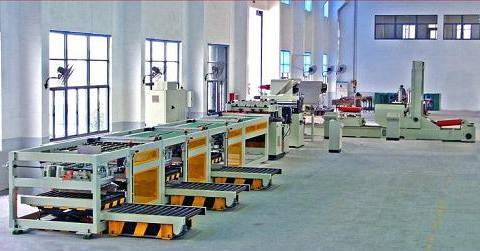
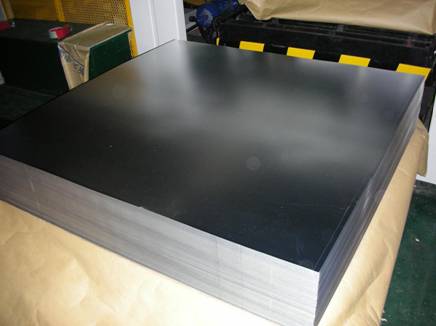
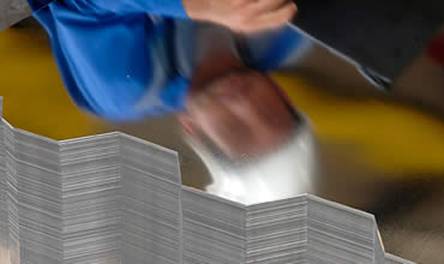
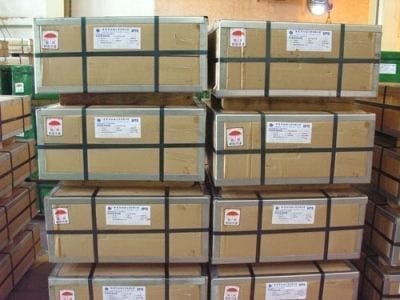

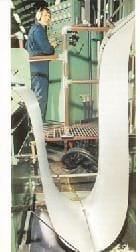
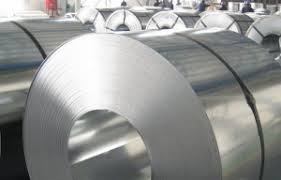




0 Comments